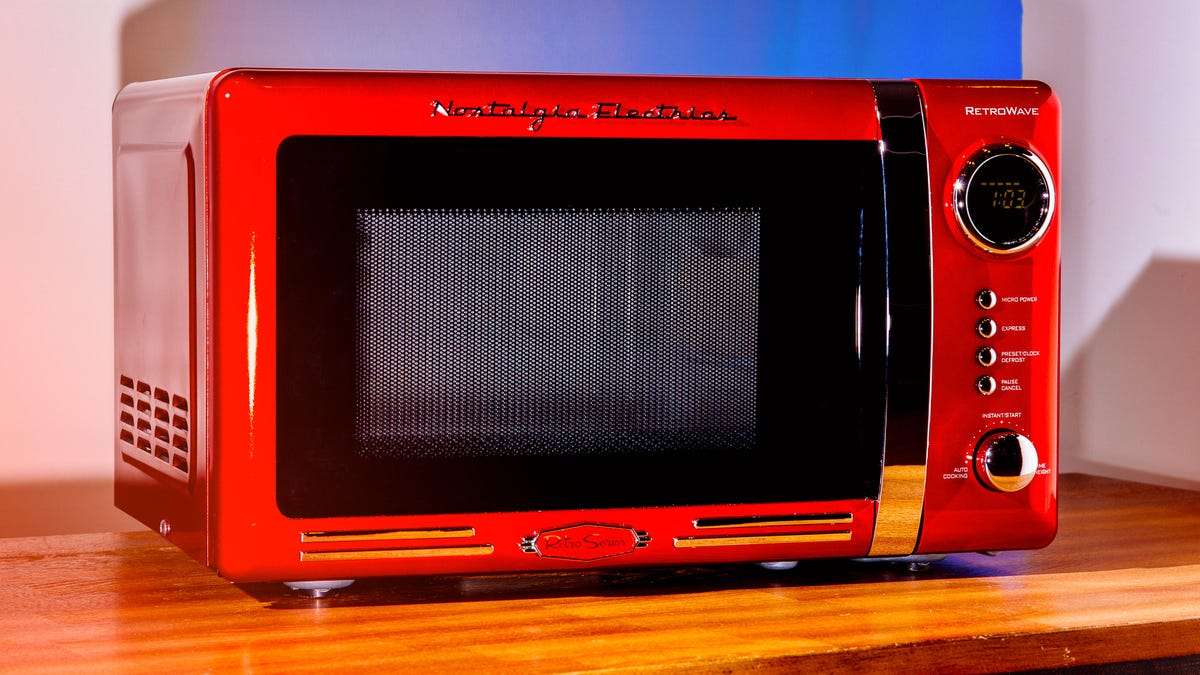15 genius ways to make microwaved food better
Your microwave can work better. Here's how.

Making your microwave better
Microwave ovens may seem magical, but they use science to heat up and cook our food.
Basically, the microwaves from the appliance make the water molecules in foods vibrate, creating heat. Here's how to use that science, and some other cool tips, to get the most out of your microwave.
Make your food thin
Most microwaves can only penetrate food that is an inch thick or less. So, for best results cut the foods you are cooking in the microwave into pieces that are an inch thick or less.
So don't try cooking a turkey in the microwave
Cooking larger items is possible, but the inside of food only gets cooked by the heat radiated inward from the outside of the food. For foods that are more than an inch thick, this process is very inefficient and slow. So, skip trying to cook a whole chicken or turkey in the microwave.
Put a hole in it
Microwaves tend to heat the outside edges of a plate of food first, often leaving the food in the center of the plate cold. When you're heating up foods, leave the center of the plate empty and line your food items around the edges. Your food will heat more evenly.
Think thick
Also, place thicker items, like drumsticks, around the outside edge of the plate and thinner items more toward the center.
Salt after heating
Salt attracts microwaves, so if your food has a fine layer of salt on top of it, the upper part of the food will get dried out. If you like your foods salty, add the salt after you heat it in the microwave or make sure that the salt is mixed in.
Put more than one bowl in the microwave
If you need to microwave more than one bowl at once, boost one of the bowls with a cup so that you have more room.
Steam your food
You can steam veggies and other foods in the microwave. Simply cut them into pieces that are less than an inch thick, put them in a ceramic bowl, add 2 to 3 tablespoons of water and place a ceramic plate over the top of the bowl like a lid. Microwave on high for 3 to 4 minutes.
Prevent rubbery meat
Cooking meat in the microwave can leave you with a rubbery, dried-up mess. If you simply must nuke raw meat, use the steaming method mentioned in the last slide. The meat will have a much better texture and it won't dry out.
Test your plastic
Not sure if your bowls or plates are microwave-safe? Michigan State University says that you can find out with a simple test. Place the dish you want to test inside the microwave, and then place a glass of 1 cup of water next to it.
Heat both of them on high for 1 minute. (Results on next slide.)
Is it safe?
If the empty container is cool after 1 minute it is microwave-safe, but if it is slightly warm, you should only use it when reheating foods, not for cooking.
If the container is hot it's not microwave safe.
Don't be square
The American Chemistry Counsel suggests only using round or oval bowls in the microwave. The corners of square and rectangular containers receive more energy then the center, so food heats unevenly.
Find the hot spot
Every microwave has areas where food will heat faster. To find your microwave's hot spots, place a plate covered in marshmallows in your microwave for 50 seconds. The areas that puff first are in the hot spots.
Next time you warm up a plate of food, set it in a hot spot for faster heating.
Don't trust the button
Don't trust the popcorn button on your microwave. Set your microwave to 2 minutes on high, and then use your own ears to get it to the right level of cooking. When you only hear a pop every few seconds, it's time to take the bag out of the microwave.
Get rid of smells
Plastic can absorb odors, so you may find that your microwave smells from time to time. Bad smells can even make the food you put in the microwave taste different.
To get rid of stink, mix 1 to 2 cups of water with 0.5 cup lemon juice in a small container, cover lightly with a cotton cloth and heat in the microwave on high for approximately 5 minutes. You may need to repeat the process a couple of times for strong odors.
Reheat breads the right way
When you're reheating any bread product that's a little stale, like a baguette or pizza crust, add a glass of water to the microwave. The steam from the glass of water will slightly moisten the bread, making it taste much fresher.
Keep it covered
Always cover your food with waxed paper, another container or even a cotton kitchen towel to keep food from drying out when reheating. The cover traps steam and will redistribute it to the food instead of letting it escape.
A cover can also keep greasy foods, like bacon, from getting oil all over your microwave.
Microwave unusual items
You can make almost anything in your microwave, including eggs and brownies. You just need to know the right technique.
For example, whipping eggs until they are frothy can prevent them from getting rubbery in the microwave. Whipping gives the eggs little air pockets that makes them light and fluffy.
Here's how to cook 10 unexpected things in your microwave.
Editors' note: Originally published in 2015, updated with link to new microwave reviews.

